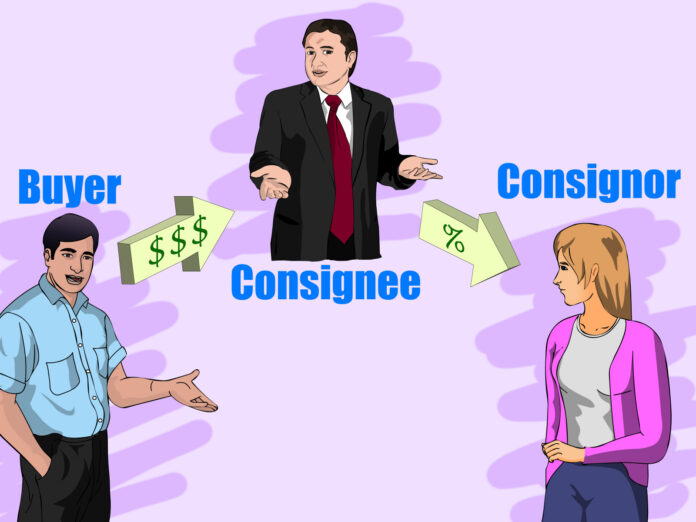It all starts when the sender ships a product to the receiver through a delivery service. The sender is also called the consignor or shipper while the recipient is the consignee. The shipping company or the deliverer is the carrier. In this article, we are going to look at the relationship between the consignor and the consignee by focusing on the shipping process. Let’s get started!
Table of Contents
The shipping process in detail
According to the dissertation help services, international shipping is not as simple as it sounds. Several milestones have to be achieved during the process of getting cargo from the consignor to the consignee. The process involves the flow of documents and goods from the original place to the destination. For this process to be completed successfully, the transfer of goods and documents from one place to another must take place in order. Here is a short overview of this entire process.
1. Requesting quotes
The first step that takes place in the shipping process is requesting quotes. However, before this, verification of the shipping details needs to happen first. Some of the common details include shipping date, destination address, place of origin, and freight dimensions. Most of these details will be provided by the consignor.
Once all these pieces of information have been provided, you’ll start getting quotes from the carrier. You as the consignor will determine how you want to get things done. You may be required to wait for a couple of days to get the quotes so that you can compare them. The information that you provide will determine the quotes that you’ll receive. Other special requirements such as shipping dangerous or volatile goods should be enumerated.
2. Choose your freight forwarder
Once you have all the quotes on your hands, the next step is choosing the right deliverer or forwarder to move your shipment safely to the destination. Today, there are more than one hundred thousand delivery companies in the world. What makes it difficult isn’t choosing the most expensive or classy one but the right one. Choose the right forwarder who suits your needs to have the shipment delivered on time. How do you know if a forwarder is good for you or not?
Experience: Experience is the one thing you should focus on when choosing a freight forwarder. Choose a deliverer who is experienced in his field. Choose a deliverer who has dealt with multiple situations such as worker strikes, warehousing issues, rerouting cargo, and port shutdown to name a few. A freight forwarder will help you avoid problems when it comes to routing, customs, and warehousing. Keep in mind that a freight forwarder should have all the certifications needed to transport cargo.
Services available: Double-checking the services that the forwarder offers will help you determine if it’s the right shipping company for you. You need to find a freight forwarder who can deliver all the services that you need. They should easily manage both sea and air cargo as well as trucking and rail to ship your products to the chosen destination.
3. Great customer service
A business that observes great customer service performs remarkably well. It is always comforting to know that your preferred forwarder will deliver your goods to the consignee in good shape and on time. Good customer service involves being proactive in answering questions, discussing the processes and requirements clearly if you’re new in business, and handling the needs of the business professionally.
The forwarder should also have great reviews and ratings. Word of mouth is the best and most effective form of marketing. If people say great things about a particular product or service, you’ll naturally feel confident to try them out. If there are no great reviews and ratings, that’s a clear sign of what you should expect.
4. Preparing the documents
This is one of the most critical sections in the process of shipping. It is something that you need to do right all the time for the goods to be delivered successfully. Some of the common shipping documents include:
Proforma invoice
In the business world, everything starts when you receive an inquiry about one or several products. This inquiry involves requesting a quotation. This quote will serve as the proforma invoice and it will be used to open other important documents and arrange for financing.
Commercial invoice
When the proforma invoice is sent to a prospect, you need to prepare your shipment for transportation. And this involves paperwork. After finalizing and preparing your goods, you need to prepare your shipping documents. And this includes copies of the commercial invoice with these pieces of information:
Description of shipment
Shipping destination
Details of the consignee
Additional information as dictated by the terms and conditions
Packing list
A packing list includes all the items in your shipment and their gross weight and dimensions in metric and imperial measurements. This list helps in identifying markings that appear on the package to ensure the safe delivery of the products.
Confirm shipment details
After preparing for the shipping process, you should double-check and confirm all the details that you’ve provided. Verifying the type and number of containers, shipment origin, and the reference numbers will ensure that everything is set for safe delivery.
5. Booking the freight
Once you’ve confirmed all the shipment details, you should proceed to book the freight. At this point, you’ll have access to all the rates of the routes that you’ll use. You’ll find that different deliverers have different transit times and routes. As you select the services that you’ll require, the prices will automatically increase or decrease. Ensure that you choose a quote that suits all your shipping needs. Confirm the departure dates and ensure that the shipping line confirms availability.
Tracking and managing shipment
After receiving a confirmation from the forwarder regarding the booking process, you can start tracking the movement of your shipment. Some deliverers will track your shipment through their online platforms in real-time. Keep checking your shipment to ensure that it’s moving in the right direction.
Receiving the shipment
If everything goes smoothly, the shipment will arrive at the desired destination in a few days or weeks. Contact the consignee to ensure that he or she has received the goods in good shape and on time. Some shipping companies will require the consignee to present verification documents such as passport, ID, or driver’s license.
What if the shipment didn’t arrive in good shape?
If the consignee reports that the goods have been damaged during transit, the shipping company might be required to compensate the affected parties. It’s always important to confirm such things before choosing a shipping company. Have the officials inspect the quality and quantity of your merchandise before shipment to avoid serious problems in the long run.
Conclusion
While the shipping process might look simple and easy, it is a complicated process that requires order and proper documentation. You have to choose a reputable deliverer who suits all your shipping needs if you want your shipment to arrive in good shape and on time. By understanding the relationship between the consignor, consignee, and deliverer, you’ll be in a better position to manage your merchandise and business operations.





